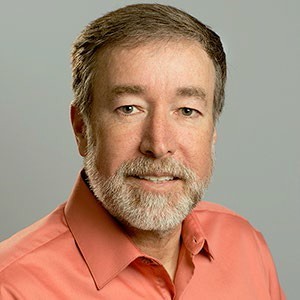Identification and Delineation of NAPL Source Term Using Laser Induced Fluorescence Screening Tools: On-Demand Program
Presenter: Randy St. Germain, Dakota Technologies, Inc.
Location: On-Demand @ EPOC's LMS Site.
Registration: You must first register here (the main event page) before you can have access to the program on the LMS site.
Continuing Education Credits:
The CT State Board of Examiners of Environmental Professionals (LEP Board) has approved this program as an on-demand distance learning course for 4.0 hours of continuing education credits (CTLEP-482 D). You cannot obtain CT continuing education credits if you have taken the live webinar offering (from 9/16/20) and claimed it to fulfill your CEC requirements. As posted on CT DEEP's website, should a distance learning course be an electronic conversion of a course previously offered as a webinar or in-person course, an LEP cannot take such distance learning course for credit if the LEP has taken the webinar or in-person course for credit unless two biennial periods have passed since the taking the classroom or field course. LEPs must complete an on-demand/distance learning course in its entirety to claim any credit whatsoever, partial credit will not be awarded.
About this On-Demand Course:
This program was previously offered as a live webinar on 9/16/20 and is a recording of that event. If you are taking this program for CT continuing education credits (CECs), you must watch the entire program video and will not have option of fast forwarding through any content. You may pause the video and return at any time to finish. After you complete the video, you will then be required to complete an Assessment of Learning test before your CEC form is issued. You must pass the Assessment of Learning test with a minimum score of 70% to complete the class and receive your continuing education credit form.
Fees:
- EPOC Member for CT LEP Credit: $200
- Non-member for CT LEP Credit: $300 (consider joining EPOC at this time to receive the member rate for this program)
- Gov't Employee for CT LEP Credit: $100
Course Description:
Chlorinated solvents, petroleum, creosote, and coal tars are common contaminants at thousands of sites all over the world. These “source term” light non-aqueous phase liquid (LNAPL) and dense non-aqueous phase liquid (DNAPL) contaminants are potent sources of dissolved phase contamination, making proper characterization of their subsurface architecture a keystone of long-term remediation success. Unfortunately, these NAPL bodies typically distribute themselves in a highly heterogeneous fashion, leaving investigators with little alternative to gathering large data sets to understand their architecture, making traditional sampling and analysis costs prohibitively high.
Laser-induced fluorescence (LIF) is a cost-effective alternative to traditional sampling because it logs the NAPL continuously in the subsurface in real time. 250 to 450 feet/day production rates are typical, making high-resolution characterization of NAPL bodies possible in just a few days or a week or two.
While LIF offers numerous benefits, it’s critical that stakeholders understand LIF technology, what the LIF technology can and can’t tell them about their site, and how to avoid applying LIF to sites and conditions that can’t benefit from LIF. In addition, proper selection of LIF technologies is key to optimizing detection of your site’s particular NAPL and potential false positives that might be encountered.
The presenter, who is the lead developer of all LIF systems currently commercially available, will provide a brief summary of how each type of LIF system works, which LIF system to apply to which contaminant, what information LIF can provide, along with its limitations. Finally, no screening technology data set should be left “standing alone” without limited targeted validation of the NAPL site conceptual model that results from the investigation. Proper validation techniques and data interpretation using multiple lines of evidence will be discussed.
Course Agenda:
- Introduction
- LIF Logging of Petroleum LNAPLs
- LIF Logging of Heavy DNAPLs
- LIF Logging of Chlorinated DNAPLs using Dye-Enhancement
Presenter Bio:
 Randy St. Germain, President and co-founder of Dakota Technologies, Inc., developed much of Dakota's underlying time-resolved laser-induced fluorescence (LIF) technology while pursuing a M.S. Analytical Chemistry degree at North Dakota State University from 1987 to 1991.
Randy St. Germain, President and co-founder of Dakota Technologies, Inc., developed much of Dakota's underlying time-resolved laser-induced fluorescence (LIF) technology while pursuing a M.S. Analytical Chemistry degree at North Dakota State University from 1987 to 1991.
Randy and his colleagues have developed a continually improving series of direct push deployable site characterization systems for HRSC of petroleum, coal tar, and creosote NAPLs in the subsurface. From early research field trials of LIF at Air Force bases as a grad student in 1992, through subsequent commercialization of the ROST, UVOST®, TarGOST®, and the new DyeLIF™ system for chlorinated DNAPLs, Randy has spent the last 28 years characterizing NAPL source term with LIF.